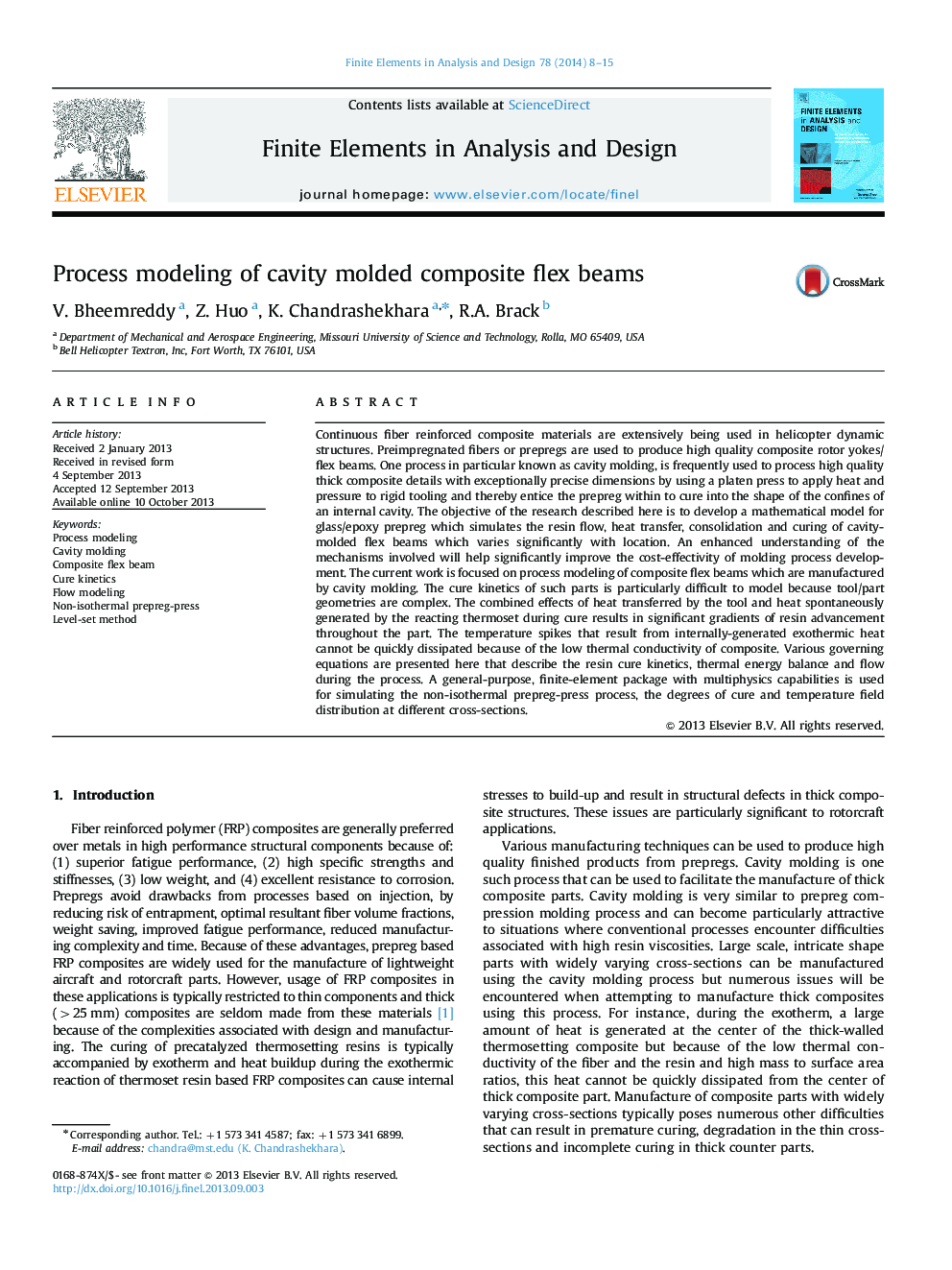| کد مقاله | کد نشریه | سال انتشار | مقاله انگلیسی | نسخه تمام متن |
|---|---|---|---|---|
| 514485 | 866748 | 2014 | 8 صفحه PDF | دانلود رایگان |
• Integrated cure and flow processes have been modeled.
• Process modeling of cavity molding process for composite flex-beams is new.
• Level set method has been used to model the flow behavior.
• Flex-beam manufacturing has been analyzed as non-isothermal prepreg-press process.
• Exothermic behavior of resin has been validated.
Continuous fiber reinforced composite materials are extensively being used in helicopter dynamic structures. Preimpregnated fibers or prepregs are used to produce high quality composite rotor yokes/flex beams. One process in particular known as cavity molding, is frequently used to process high quality thick composite details with exceptionally precise dimensions by using a platen press to apply heat and pressure to rigid tooling and thereby entice the prepreg within to cure into the shape of the confines of an internal cavity. The objective of the research described here is to develop a mathematical model for glass/epoxy prepreg which simulates the resin flow, heat transfer, consolidation and curing of cavity-molded flex beams which varies significantly with location. An enhanced understanding of the mechanisms involved will help significantly improve the cost-effectivity of molding process development. The current work is focused on process modeling of composite flex beams which are manufactured by cavity molding. The cure kinetics of such parts is particularly difficult to model because tool/part geometries are complex. The combined effects of heat transferred by the tool and heat spontaneously generated by the reacting thermoset during cure results in significant gradients of resin advancement throughout the part. The temperature spikes that result from internally-generated exothermic heat cannot be quickly dissipated because of the low thermal conductivity of composite. Various governing equations are presented here that describe the resin cure kinetics, thermal energy balance and flow during the process. A general-purpose, finite-element package with multiphysics capabilities is used for simulating the non-isothermal prepreg-press process, the degrees of cure and temperature field distribution at different cross-sections.
Journal: Finite Elements in Analysis and Design - Volume 78, January 2014, Pages 8–15
